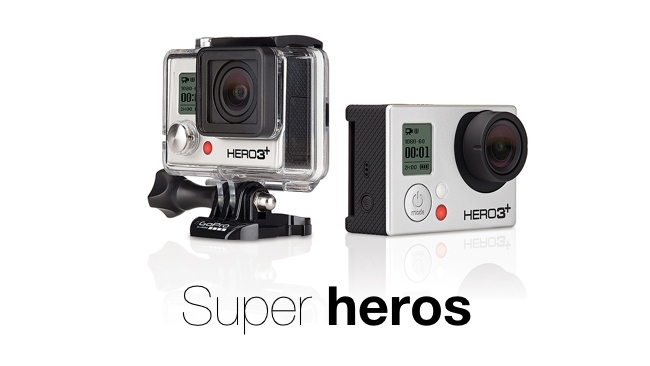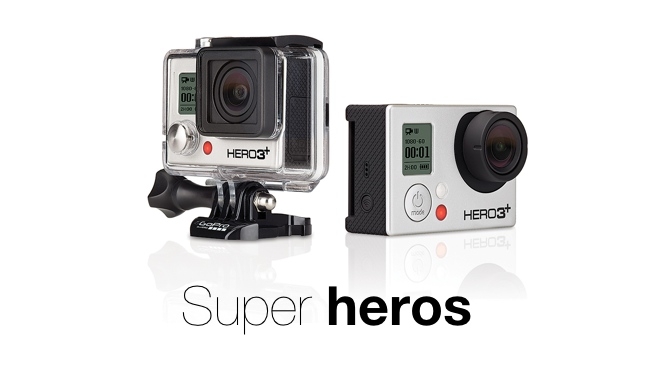
 GoPro Hero 3+
GoPro Hero 3+
It isn't obvious how some of the features in the new GoPro Hero 3+ cameras work. But now we know
When we first told you about the new Hero 3+ about a week ago, we weren't sure what they meant by "Super View" which "captures the world's most immersive wide-angle perspecitve", or Auto Low Light which adjusts the frame rate for varying lighting conditions ... and we said we'd let you know as soon as we found out. Well, now we know.
It's not the biggest news - but it's interesting to see that GoPro have taken these design decisions.
Improved
First of all, though, overall, the consensus seems to be that the cameras have been improved, with a sharper image, less chromatic aberration, and better colour rendition, with warmer tones and somewhat deeper primary colours.
The GoPro's sensor is 4:3, which means that you're either going to have to crop it top and bottom to give you 16:9 ("traditional" widescreen), which throws away resolution, or you'll have to stretch it somehow. Simply doing this will make everything look short and fat. So what Super View does - and this is something that we in Europe have been used to for around 15 years, is leave the centre of the image pretty much as it is, and increasingly stretch the image as it approaches the right and left edges. Done well, this not only gives an acceptable widescreen image, but also makes it look pretty wide angle as well, even though it isn't. The reason we're used to it in Europe is that this is how manufacturers of early Widescreen sets made them more acceptably compatible with showing 4:3 footage, without leaving ugly black bars down the sides of the picture.
So there's nothing miraculous here; just a bit of stretching.
Low light
Auto Low Light mode is a feature that might save your neck in low light conditions but is far from ideal from a film makers point of view. It's a simple trick.
If you're shooting at 1080/60 and the light drops below a n acceptable level, the frame rate will drop automatically to 30 fps. On playback, you will still have 60 refreshes per second, but in the low light mode, you'll find that every frame is repeated. This allows more light to strike the sensor, but most photographers will see this as a "get out of jail" card rather than something they would seriously want to use, because it takes control away from them. Of course you can turn this off if you don't want to use it.
Thanks to Abe Lislevitz for explaining this in his blog.
Tags: Technology



Comments